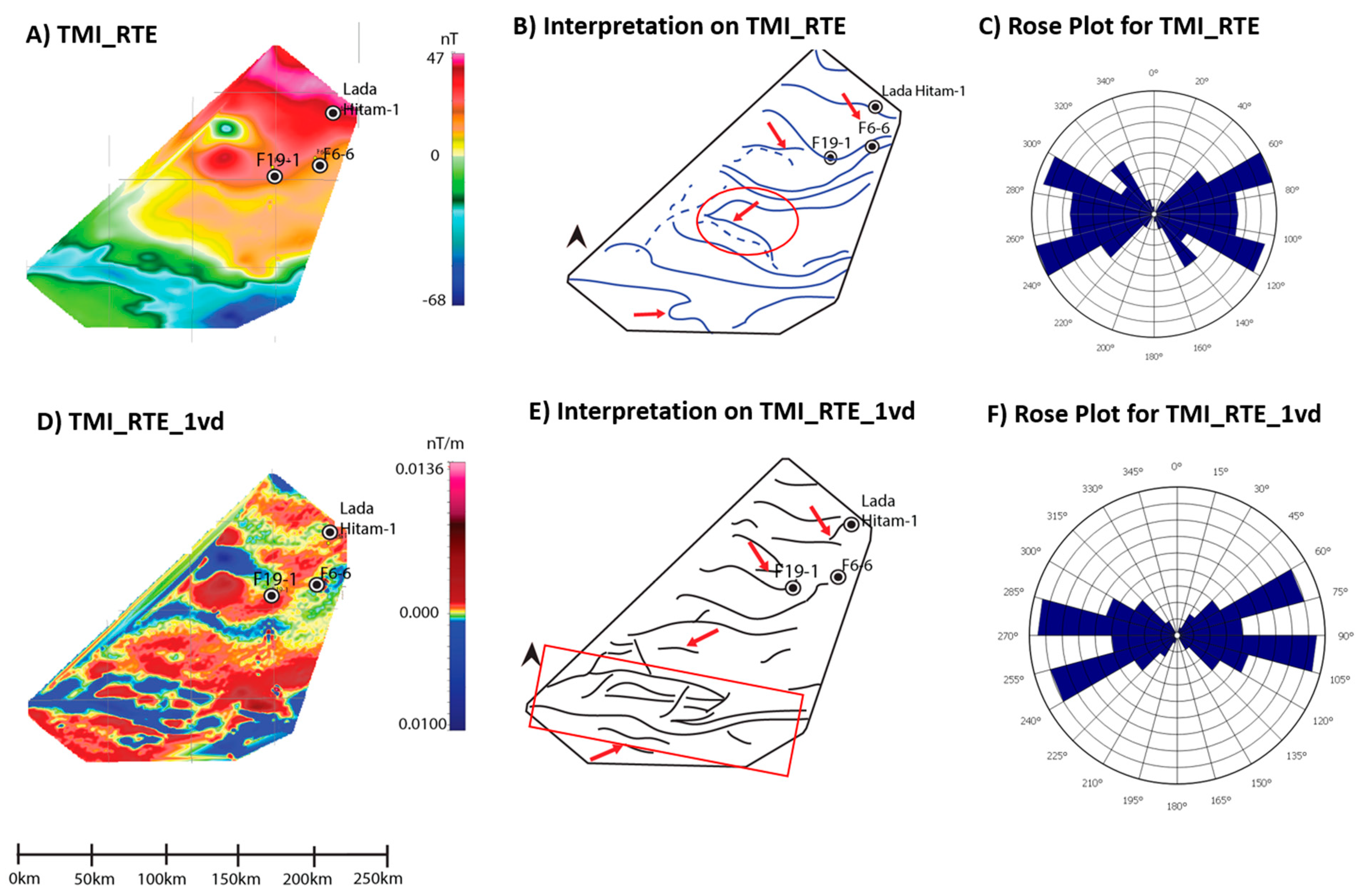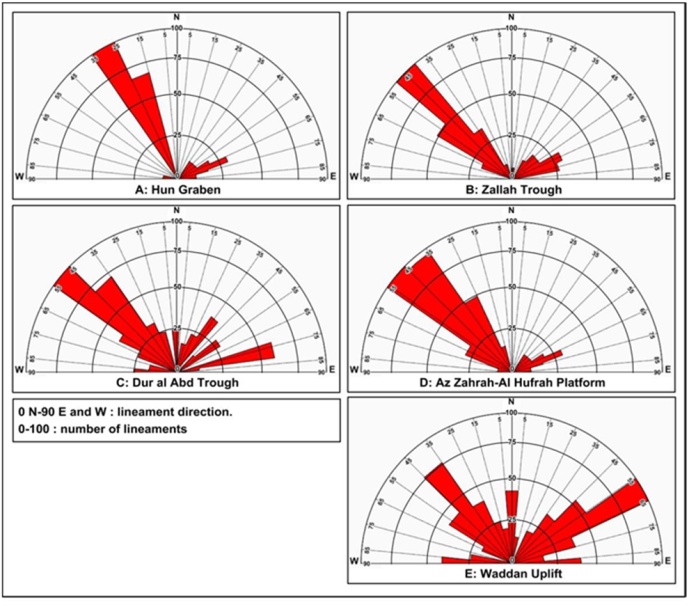
a BLUE pattern is signified by a common azimuth and decreasing dip with depth. This pattern is most commonly associated with compactional drape. a RED pattern is signified by a common azimuth and increasing dip with depth. a GREEN pattern is signified by a common azimuth and essentially constant dip.This pattern most commonly represents regional stratigraphic dip. In order to be included in a pattern, the tadpoles must be contiguous and have a similar azimuth Patterns of tadpoles are then clustered by a color convention, prior to geological interpretation. Depth ranges with no tadpoles signify intervals where the computer processing failed to find any reasonable correlation matches. its value, indicated by the tadpole head, with the strongest correlation shown by a solid circle, then progressive degrees of doubt expressed by an open circle, and then a cross. its direction of dip, reflected by the orientation of the tail on a conventional compass circle. The result of each successful correlation is displayed on the processed dipmeter log as a vector or "tadpole". In perhaps the earliest routine geological computer application, the digital microresistivity logs were correlated statistically. In the early days, the correlation of features was made visually and dip and strikes calculated laboriously. The vector (or tadpole) plot summarises the correlation of microresistivity features recorded by the dipmeter. The results of the microresistivity correlations of strike and dip are presented as a vector plot (or "tadpole plot"). The relative depth shift between correlative features is a function of their strike and dip.A planar feature will sketch out a sinusoid on the "flattened" borehole wall. The fine vertical resolution allows features as thin as one to two centimeters to be resolved.īecause lithological changes are relatively minor when traced across the width of the borehole, the overall form of the resistivity traces tends to be similar. The raw results of a dipmeter run are microresistivity traces. The winding of the logging cable on the winch causes the tool to rotate and the direction of Pad #1 is continuously recorded by a compass in Track 1 as the azimuth Pad #1 is used as the reference pad for tool orientation.Īs the tool is pulled upwards, the deviation of the borehole from the vertical causes it to tilt and this is recorded in Track 1 as the borehole deviation angle by a weighted pendulum On a four-arm device the microresistivity pads are identified by number. The graphic shows a highly simplified representation of the logs recorded by the dipmeter. Next, we will see how the microresistivity curves are analyzed for dip and strike measurements.ĭip and Strike Determination from the Dipmeter These evolved to the four-arm dipmeter in the 1960's and the modern dipmeter which has six arms to help in the distinction of real bedding features from artefacts. 
Each pad measures the microresistivity of the formation.īy correlating a microresistivity feature across the borehole, a plane can be defined and its dip and strike computed.Įarly dipmeters in the 1940s had three pads which is the minimum number needed to define a plane. The dipmeter is a tool with arms arranged radially around a central mandrel with pads pressed against the borehole wall by a spring mechanism. In addition, the dip and strike of crossbedding features is a key element in sedimentology studies of transport direction and facies. The determination of the dip and strike of beds is a routine measurement in outcrop descriptions as part of field mapping and the resolution of structural geometry and tectonics.

Prev Page-Mineral Composition Profiles ||






 0 kommentar(er)
0 kommentar(er)
